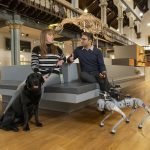
The latest challenge that autonomous vehicles are struggling with is driving in fog.
Five of Waymo’s fully driverless vehicles had to pull over by the side of a residential street in San Francisco on Tuesday when they encountered the city’s notoriously dense fog.
The incident caused significant traffic issues, as motorists were unable to pass the parked vehicles.
In a blog post a couple of years ago, Waymo highlighted the difficulties that fog poses.
The post highlighted that fog isn’t just a danger for autonomous vehicles. The US Department of Transportation logs more than 38,700 crashes every year – resulting in over 600 fatalities and 16,000 injuries – that occur during fog. However, fog also plays havoc with the sensors of autonomous vehicles.
Waymo’s fifth-generation imaging radar uses microwaves instead of light to see through fog and mist. A new cleaning system was designed to keep the cars’ sensors clean.
“Our fifth-generation, state-of-the-art imaging radar complements our lidar and cameras with its unmatched resolution, unparalleled field of view, and its unique ability to instantaneously measure velocity. And since it uses microwaves instead of light, it sees through weather conditions like fog and mist,” explains Waymo.
“We’ve also engineered a robust sensor cleaning system that employs various mechanisms, from utilising hydrophobic films to shaping natural air flow around the sensors and utilising a pulsed air-puffer and wiper system to keep our sensors’ surfaces clean from fog droplets, rain, dust, and other road grime.”
However, something clearly failed on Tuesday with Waymo’s system and the cars had to be parked temporarily.
Waymo confirmed the incident in a statement. The cars continued on their way after a brief stop and the company announced that it has software updates planned to improve its fog and parking performance.
Waymo and General Motors-backed Cruise are now able to carry paid passengers in San Francisco. The vehicles are still operating under strict rules while engineers continue to refine the hardware and software that powers them.
Both companies have had several mishaps in San Francisco, prompting officials to call for a slowdown of autonomous car pilot tests until the technology is improved.
In another recent incident, cameras and sensors on several Cruise cars apparently failed to spot cables that had come down in a storm and ended up becoming entangled in them.
Keen to avoid tighter regulations, Waymo and Cruise point out that their autonomous vehicles have driven more than a million miles in complex urban environments without any serious injuries or fatalities.
(Photo by David Barajas on Unsplash)

Want to learn about the IoT from industry leaders? Check out IoT Tech Expo taking place in Amsterdam, California, and London. The event is co-located with Digital Transformation Week.
Explore other upcoming enterprise technology events and webinars powered by TechForge here.






